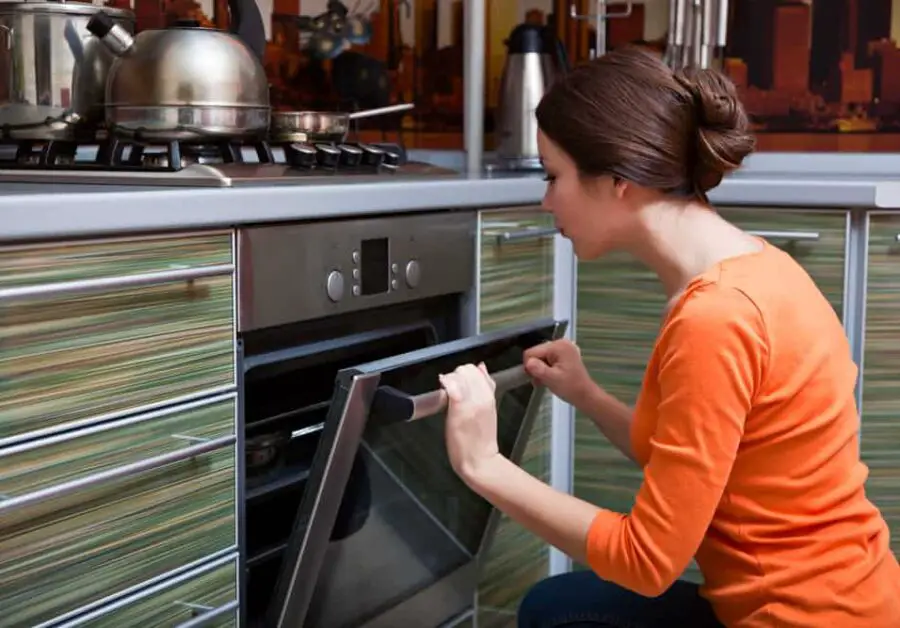There are mug recipes for everything it seems. From mug cake to mug cinnamon rolls to mug quiche and even mug pizza!
It’s not only convenient way to make a single serving but can also kill those cravings without your diet going off the rails.
So, you’ve got your eye on a recipe or three that you want to try but you’re left wondering if your coffee mug can do the job.
Will it? Can you put a coffee mug in the oven or not?
The answer is… maybe. Before doing anything else, check the mug to see if the manufacturer has marked it as “oven safe”. If so, you should be fine. Otherwise, if you’re using a conventional oven and your coffee mug is made of stoneware or porcelain, then yes, you can put your coffee mug in the oven. The only exception to this would be that if the porcelain is thin or decorative. Here, you’re better off not putting the mug in the oven.
How Hot Can a Coffee Mug Get?
The reason this is an important question to consider is that coffee mug manufacturers are making their products for consuming a hot beverage as opposed to baking with it.
According to the National Coffee Association, a coffee maker/brewer should make your beverage anywhere from 195 degrees Fahrenheit to 205 degrees Fahrenheit.
With that in mind, most recipes for mug cakes call for your oven to be 350 degrees Fahrenheit or more, which leaves you with a mismatch of over 100 degrees Fahrenheit that needs to be considered.
With this in mind, we’ll look at some options that might work better and some that most definitely do not.
Oven Safe Common Coffee Mug Materials
Now that we know that we have to select the right mug material for oven use, you’re probably wondering what some of those might be.
Earthenware Coffee Mugs
Usually cups made from Earthenware will be less expensive as materials are often sourced locally and as a result, less refined in terms of their finish. This makes them a more affordable option, but it’s also the reason they are more susceptible to chipping and cracking.
Earthenware mugs will be kiln fired at lower temperatures than other materials. The temperatures range from a low of 1900 degrees Fahrenheit to 2000 degrees Fahrenheit. Mugs made from earthenware are safe for microwave use/reheating purposes but would not be safe to put in the oven because of its tendency to crack easily.
Stoneware Coffee Mugs
Stoneware is more durable than earthenware and has lower porosity. Stoneware is also kiln fired at much higher temperatures than earthenware, typically from 2,100 degrees Fahrenheit up to 2,300 degrees Fahrenheit. Because of its density, Stoneware lacks the refinement of porcelain but this makes it suitable for ovens.
The thickness of stoneware allows it to retain heat more efficiently and maintain the distribution of heat within the coffee mug.
Porcelain Coffee Mugs
Porcelain is non porous and is kiln fired at temperatures exceeding those of earthenware, stoneware and most ceramics. Porcelain is fired at temperatures ranging from 2,380 degrees Fahrenheit up to 2,450 degrees Fahrenheit making it the most durable of most ceramic coffee mugs.
With the possible exception of fine porcelain coffee mugs, which should not be used in an oven. This is not because they cannot withstand the temperature but because they are delicate, they can be easily mishandled and cracked.
Glass Coffee Mugs
Most glass will be oven safe. The key is to allow it to reach room temperature first. It is imperative that you know the temperature the glass can withstand before placing it in the oven. Without knowing this, the mug could be subject to thermal shock, which we will discuss in a moment.
There are certain types of glass that are designed for oven use. They are made of borosilicate glass or tempered which reduces, but doesn’t eliminate the risk of thermal shock. Another type of commonly used glass, soda lime glass, is not resistant to thermal shock.
| Material | Oven Safety | Temperature Range | Notes |
|---|---|---|---|
| Earthenware | Not Safe | 1900-2000 F | Susceptible to chipping and cracking, safe for microwave use/reheating |
| Stoneware | Safe | 2100-2300 F | Durable and suitable for ovens, maintains heat and heat distribution well |
| Porcelain | Safe (with exception of fine porcelain) | 2380-2450 F | Delicate, can be easily mishandled and cracked, non porous and most durable ceramic material |
| Glass | Safe (with certain types) | Varies | Allow to reach room temperature first, check for thermal shock resistance, borosilicate glass or tempered glass are suitable for oven use while soda lime glass is not. |
Non-Oven Safe Coffee Mug Materials
It probably stands to reason that the materials listed below won’t be safe for the oven, but for the sake of thoroughness, we’ll cover them below.
Styrofoam Coffee Mugs
This one is should not require much explanation, but it’s never a good idea to put a Styrofoam coffee mug in your oven at any temperature above 200 degrees Fahrenheit. The cup will soften at temperatures higher than this and start melting once temperatures exceed 460 degrees Fahrenheit.
Plastic Coffee Mugs
While most plastic is safe for microwave use, you should not put plastic coffee mugs in the oven for the same reason you wouldn’t use Styrofoam – it will melt and leave you with a huge cleanup headache.
Cork Coffee Mugs
Cork has its place in baking but since most cork coffee mugs are made with other materials (like plastic), it’s best to avoid using it in your oven.
| Material | Temperature Limit | Notes |
|---|---|---|
| Styrofoam | 200 F | Will soften and melt above this temperature, should not be used in the oven |
| Plastic | N/A | Will melt and cause a cleanup headache, not safe for oven use |
| Cork | N/A | Not suitable for oven use, mostly used with other materials and may not be able to withstand the high temperatures in an oven. |
What is Thermal Shock?
Even though your mug might be suitable for oven use, you need to be aware of a phenomenon known as thermal shock.
Thermal shock occurs when your mug is exposed to extreme changes in temperature which can cause to crack. This can apply to any of the materials we’ve discussed here including stoneware, porcelain and glass.
To minimize the risk of thermal shock, it’s best to remove your mug from the oven and allow it to slowly return to room temperature. During this time, avoid contact with cold water or even lukewarm water as it increases the likelihood of thermal shock.
| Material | Prevention Method |
|---|---|
| All materials | Remove mug from oven and allow it to slowly return to room temperature, avoid contact with cold or lukewarm water |

Hiya! I’m Kimberly, a contributing writer here at Miss Buttercup. I was born and raised in the UP, Michigan’s Upper Peninsula for those who don’t know, the land of beautiful, beach-filled sunny summer days and bone-chilling long winters. Growing up there made me appreciate all the little things about life, especially the way a delicious meal can bring people closer together. I try and put that same feeling into each article I write and I hope it comes across that way!

